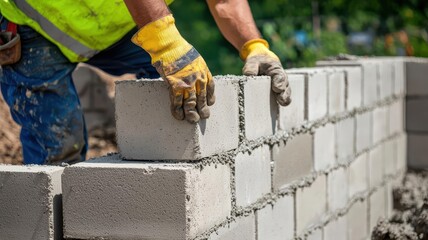Real Estate is a popular investment and an integral part of any modern portfolio. This report analyzes current information and research on real estate investments to provide insights to investors and analysts.
High-net-worth buyers prioritize exceptional quality and intrinsic value over price point. These discerning clients want properties that demonstrate enduring worth through unique architectural features and premium craftsmanship. Read on Grey Oaks Naples Homes For Sale to learn more.
Market cycles are a vital component of real estate transactions. Understanding these cycles can help investors optimize risk and return in real estate investments. Real estate professionals are experts at deciphering these shifts and guiding clients through the complexities of buying, selling, and investing in property. The duration of a real estate cycle can vary from five to 20 years depending on local market conditions and economic factors.
Market cycle factors such as broader economic trends, interest rates, and construction activity influence real estate demand and prices. These factors can also affect financing conditions. For example, low interest rates may boost demand for real estate investment by reducing borrowing costs. In addition, changes in demographics and household composition can also impact real estate demand. Real estate professionals must be aware of these trends to identify emerging markets and inform their investment strategies.
Real estate investment opportunities can be found throughout the real estate cycle, but the best time to invest is during the recovery phase of the cycle. The recovery phase is characterized by gradual improvements in market conditions, including decreased vacancy rates and stable rents. This phase is a great opportunity for investors to acquire properties at a discount and improve them to increase value and return on investment.
The next phase in the real estate cycle is expansion, when the demand for property continues to grow. At this stage, competition for properties is high, and it’s important to remain competitive in order to attract buyers. To do this, it is a good idea to offer additional incentives, such as covering closing costs and providing home warranties.
Once the expansion phase begins to taper off, it’s important for sellers to adjust their pricing and marketing strategies. This can reduce the amount of time their properties stay on the market and prevent overpricing. Additionally, it’s critical to monitor lending conditions during this period to make sure that the market is not overheated.
Supply and demand
In the real estate business, supply and demand are key factors that drive prices. When there is more demand than supply, prices rise; when there is more supply than demand, prices decrease. Demand can be influenced by population growth, personal income, and changing tastes and preferences. It can also be affected by mortgage availability, affordability, and government incentives. These factors can vary from region to region, but are crucial to predicting the direction of the market.
The ability to pay for a property is influenced by two factors: the desire for it and the ability to afford it. The desire factor is determined by the amount of money a buyer has available and his or her willingness to spend it. It can also be influenced by the cost of borrowing, the location of the property, and the economic vitality of a specific region.
Another important factor influencing demand is the number of people who want to live in a particular area. This is particularly true in urban areas, where the population may be growing faster than the housing stock. This can lead to a bidding war among home buyers and push up prices.
Interest rates, inflation, and employment levels are also significant indicators of the real estate market. Lower interest rates encourage borrowing and stimulate demand, while higher inflation can increase construction costs and reduce demand. Analyzing these trends can help market participants anticipate shifts and make strategic decisions.
In addition, the real estate market is influenced by demographic and migration trends, which can affect demand for both residential and commercial properties. For example, millennials may prefer urban neighborhoods, while baby boomers might prefer suburban or retirement communities. In addition, aging populations can influence demand for senior living facilities.
Another factor affecting demand is the price of renting a property. If it is cheaper to rent a property than buy one, more people will choose to do so. This can be a good sign for the market, as it shows that consumers have more options and are willing to spend their disposable income on housing.
Timing a real estate transaction
The timing of a real estate transaction can have a significant impact on a property’s value. Whether you’re buying or selling, the right timing can ensure that you’re making a smart investment. It’s important to consider local market conditions and seasonal trends when deciding on your investment strategy. You can also gain insights by networking with local real estate experts and attending industry events. These insights can help you to optimize your real estate investment timing.
Trying to time the real estate market is risky because market conditions are unpredictable and influenced by a variety of factors. For example, unexpected events can dramatically change market conditions, causing you to miss out on opportunities. In addition, trying to predict market movements can distract you from more stable strategies, such as evaluating a property’s long-term potential.
In addition, investors’ psychology at different stages of the market cycle impacts cap rates and values. For instance, during an economic recession, investor sentiment tends to turn pessimistic, leading to lower risk appetite and higher cap rates. In a boom period, investor optimism can lead to overexuberance and elevated values, which are difficult to sustain.
If you try to time a real estate transaction, you may end up losing money due to high transaction costs and bad market conditions. For example, if you sell your home while prices are high and buy another one when they’re low, you’ll end up losing money on both transactions. You can avoid this mistake by focusing on your personal goals and choosing a timeframe that makes sense for you.
During the negotiation process, real estate professionals need to be able to anticipate market trends and respond quickly to changes in demand. A well-timed counteroffer can boost a seller’s leverage and increase the likelihood of a favorable outcome. However, it’s important to avoid rushing into negotiations, as doing so can signal a lack of interest or desperation.
The best way to understand real estate market trends is by analyzing historical data and anticipating future patterns. Keeping a portion of your funds liquid can enable you to react quickly to new investment opportunities. You should also maintain financial flexibility by regularly reviewing your financial plans and networking with local market experts.
Pricing a property
Real estate pricing is an important factor that influences the success of a real estate transaction. It is a process that combines many factors, including location, property condition, market trends, and seller motivations. Understanding these factors can help you make better decisions about your next real estate purchase or sale.
A good starting point for pricing a property is to research comparable sales in the area, or “comps.” These comps can help you determine the market value of a particular property and inform your offer price. You should also consider the property’s unique features and any necessary repairs or renovations. Lastly, it is helpful to know what your real estate agent thinks about the property’s potential.
The size of a property is an important consideration when determining its value, as it will influence how many people can comfortably live in the home. It is also important to assess a property’s location, as this can affect its value and potential for future growth. For example, a property in a desirable neighborhood with nearby amenities will likely have a higher value than a property located near a busy highway or other negative elements.
Depending on the market conditions, buyers may either accept or reject the asking price of a property. If the property is overpriced, it will sit on the market for longer and may not sell at all. However, if the property is priced well, it will attract more buyers and sell quickly.
A real estate transaction involves a long-term commitment, so it is essential to consider your family’s needs and lifestyle requirements when choosing the right property. A property that will accommodate your future plans and current lifestyle will ensure a more successful ownership experience.
In addition to the factors discussed above, real estate pricing is influenced by market conditions and local economic growth. This information can impact a buyer’s willingness to pay for the property and influence negotiating tactics. Additionally, it is helpful to understand the difference between listing and selling prices, as each reflects distinct transactional aspects. Grasping these distinctions can help you manage the fast-paced real estate market effectively.


















